Performance Analysis and Backtests of Horizon smallcases

To test whether Horizon smallcases (target year investing) works well or not, we thought of backtesting our theory using past market data.
The first set of backtesting was done for investors starting their investment journey at the end of 2004. So basically, imagine starting a goal-based investment journey on 31st Dec 2004. Now imagine you have goals with target years after 10, 15, 20, 25, 30, and 35 years from the end of 2004. So basically you could have invested in 6 different smallcases with target years at the end of 2014, 2019, 2024, 2029, 2034, and 2039.
The below graph outlines the investment journey in 6 of these target-year smallcases.
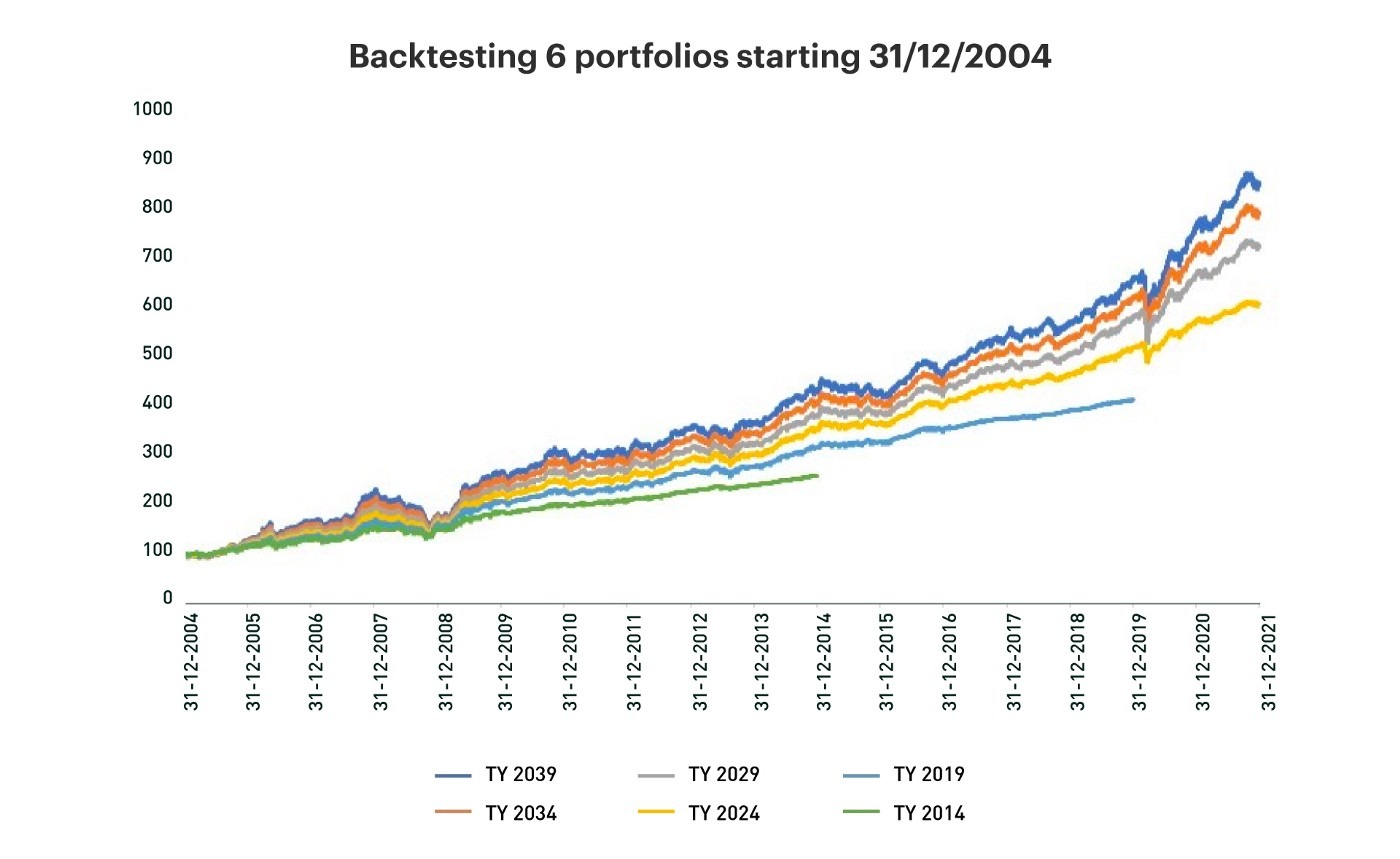
The starting index for all portfolios is kept at 100 for ease of comparison. It starts on 31st Dec 2004. As you can see, the shortest line (TY 2014) shows the wealth amassed over 10 years — on 31st Dec 2014. Similarly, the second shortest line (TY 2019) is the one maturing after 15 years (on 31st Dec 2019). Since the other 4 portfolios are yet to reach their target years, the backtested data has been updated till 31st Dec 2021.
As we have said before, the further your target year, the more aggressive your investments (in asset classes like equity and gold) in the initial years, and hence you can see in the above chart that the later your target year for a smallcase, the higher the wealth you have generated. This can be noticed by seeing that, for example, the line for 2039 is higher than 2034, which is higher than 2029, and so on…
This backtesting confirms our theory of how target-date investing should work — that is, further your target date, higher the allocation to aggressive asset classes, and as the target date approaches, investments will shift to more conservative asset classes like cash and bonds.
While backtesting our hypothesis this way, we realized that if we only built the backtests taking 2004 as the base year, there may be some kind of base-period bias. To eliminate any kind of base-period bias, we tested the 6 different horizons as taken in the previous example with different starting points. Apart from the one above that starts on 31st Dec 2004, we ran backtests starting on 31st Dec 2005, 31st Dec 2006, 31st Dec 2007, 31st Dec 2008 and 31st Dec 2009.
For each of these starting points, you can see a graph below, similar to the one we have above. It is worth of noting that all trajectories are similar to what was expected and our hypothesis worked across different testing periods. However, it is prudent to note that these are backtested results and the future market outlook doesn’t necessarily always reflect how markets will behave going forward.
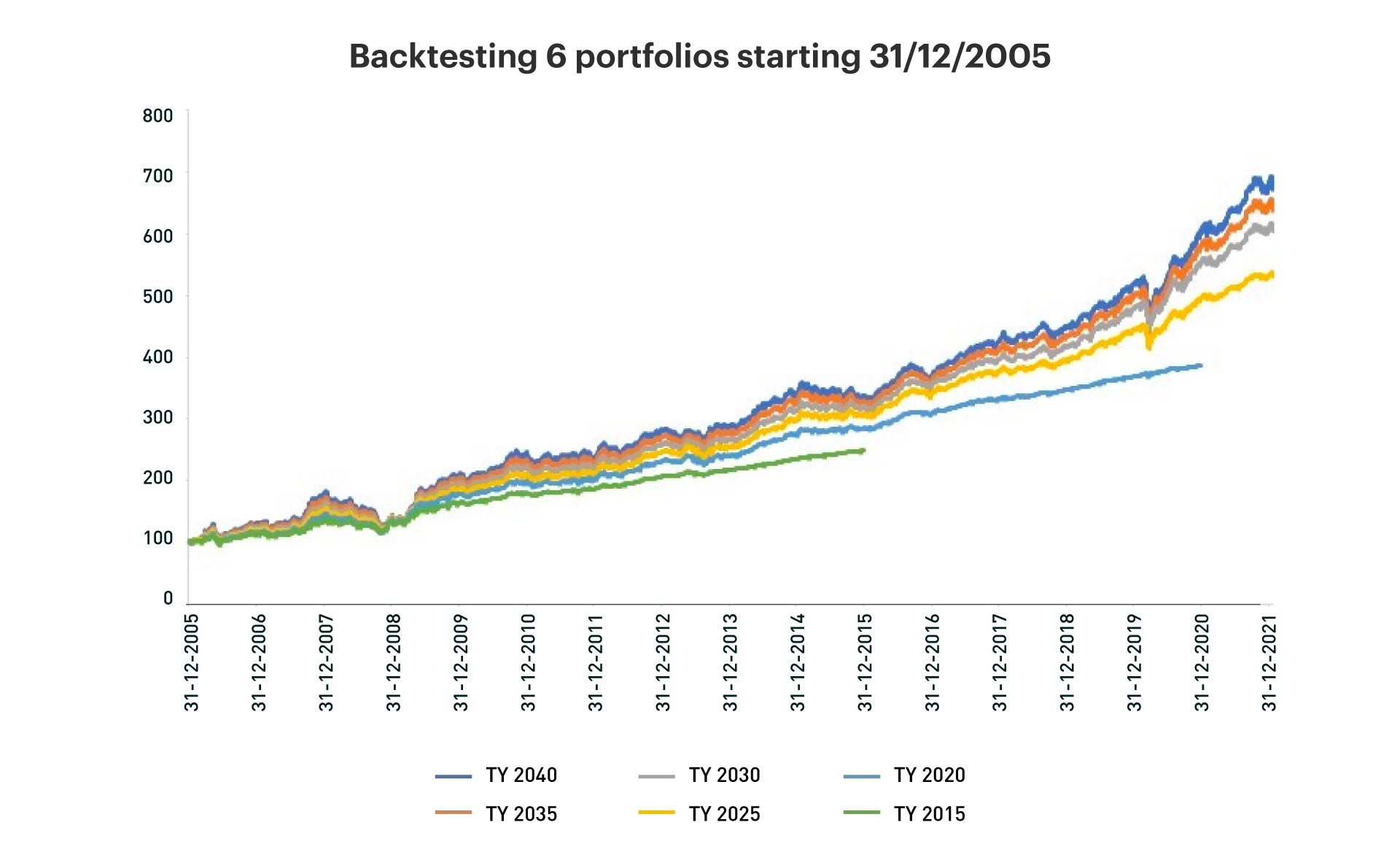
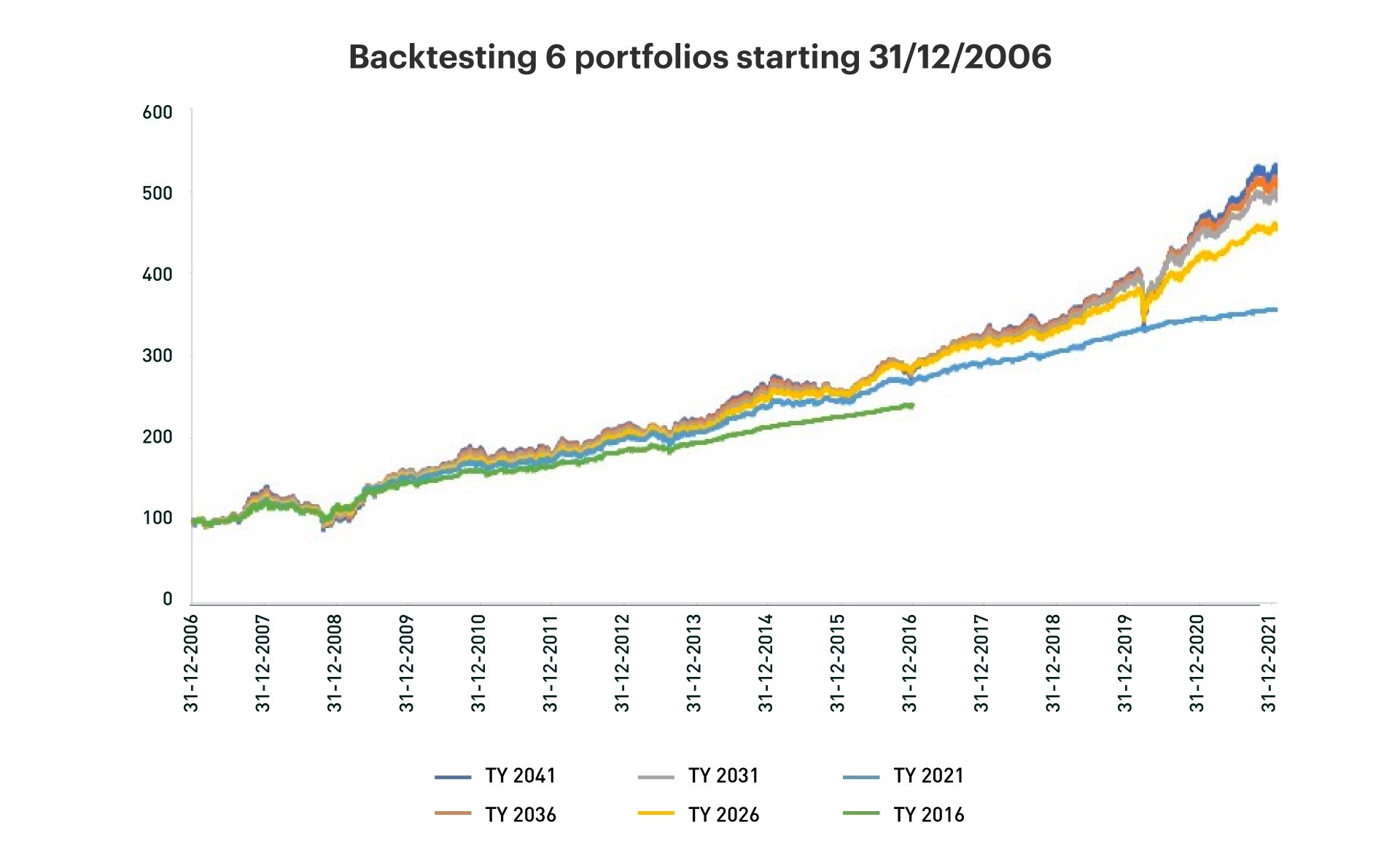
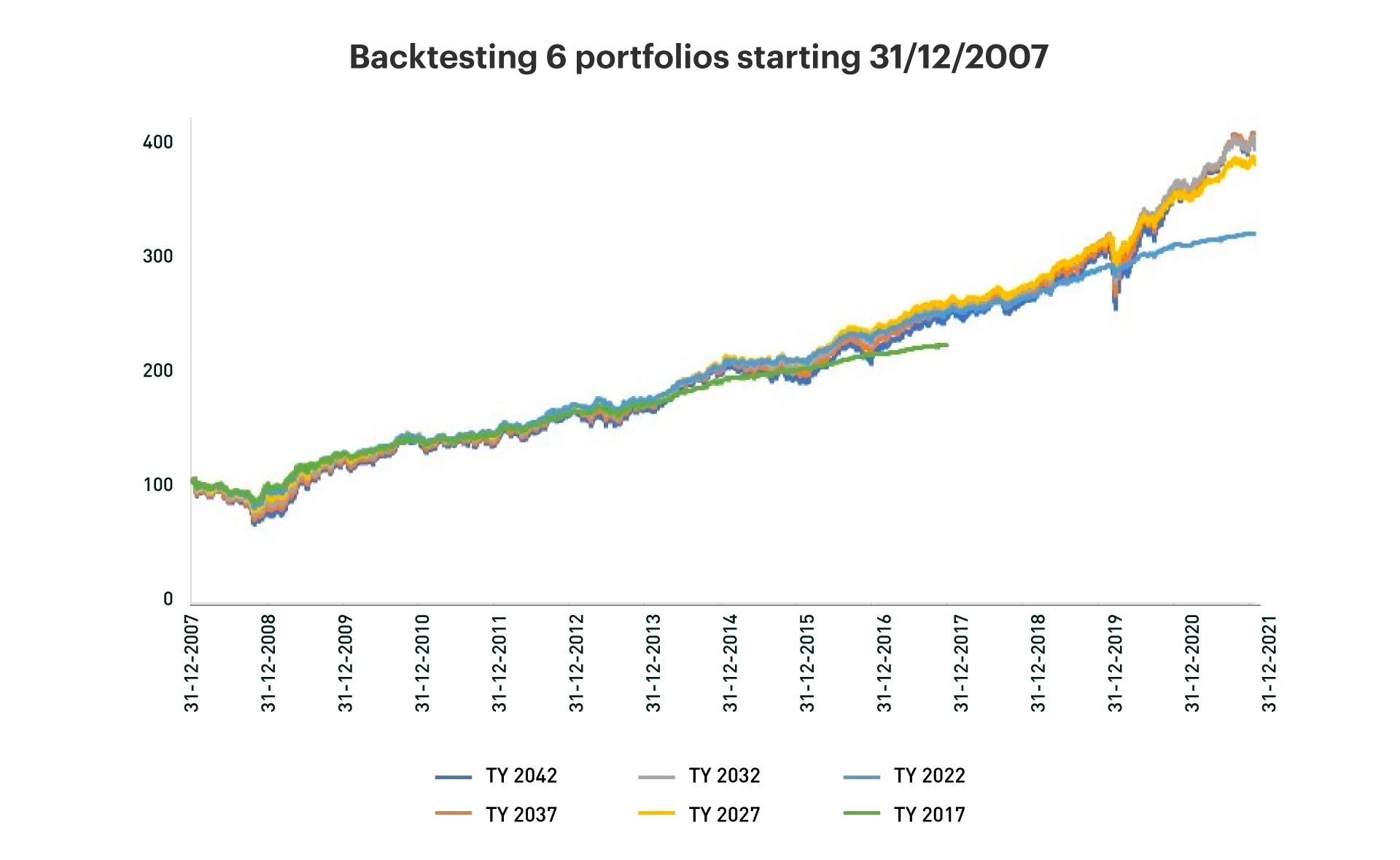
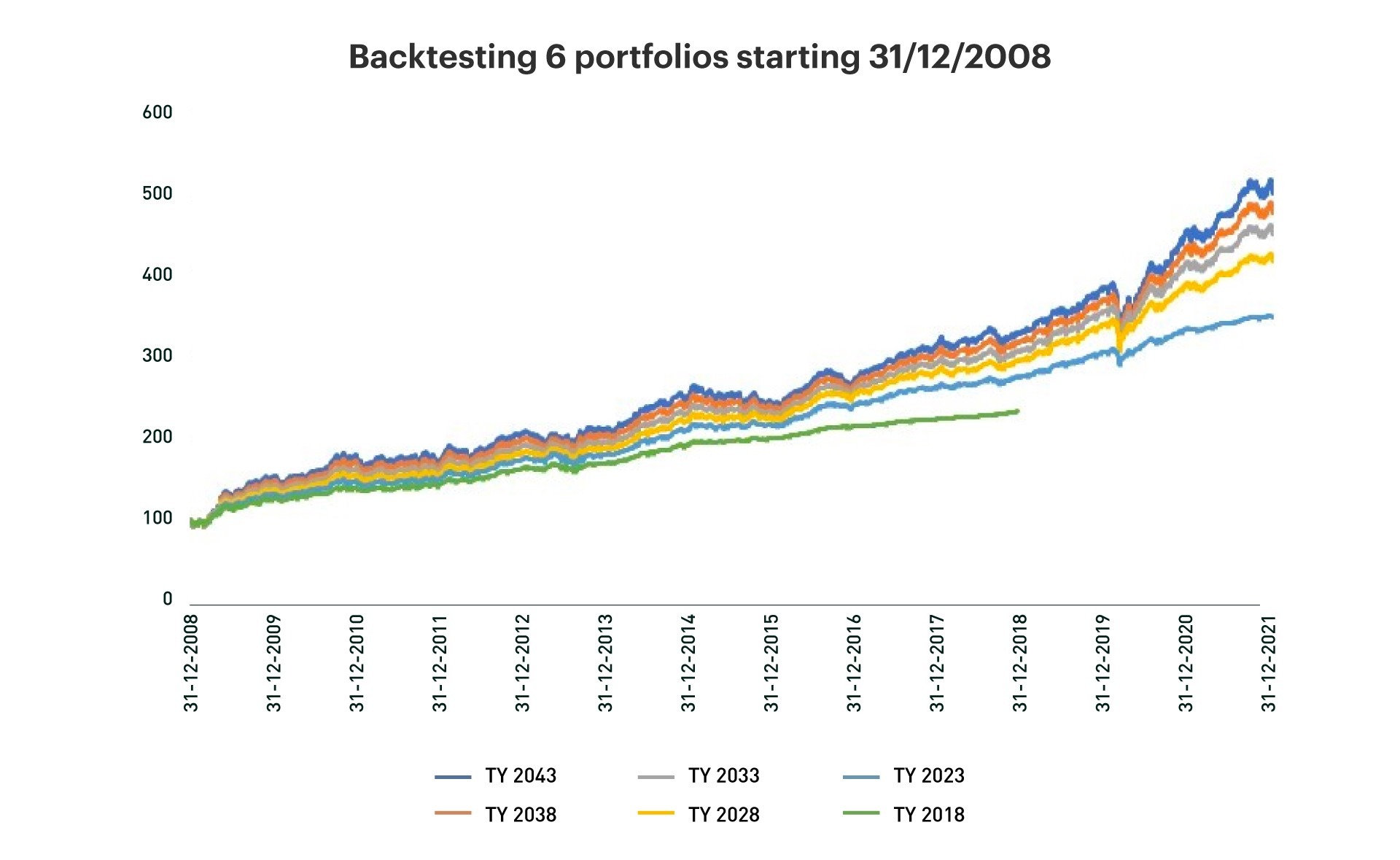
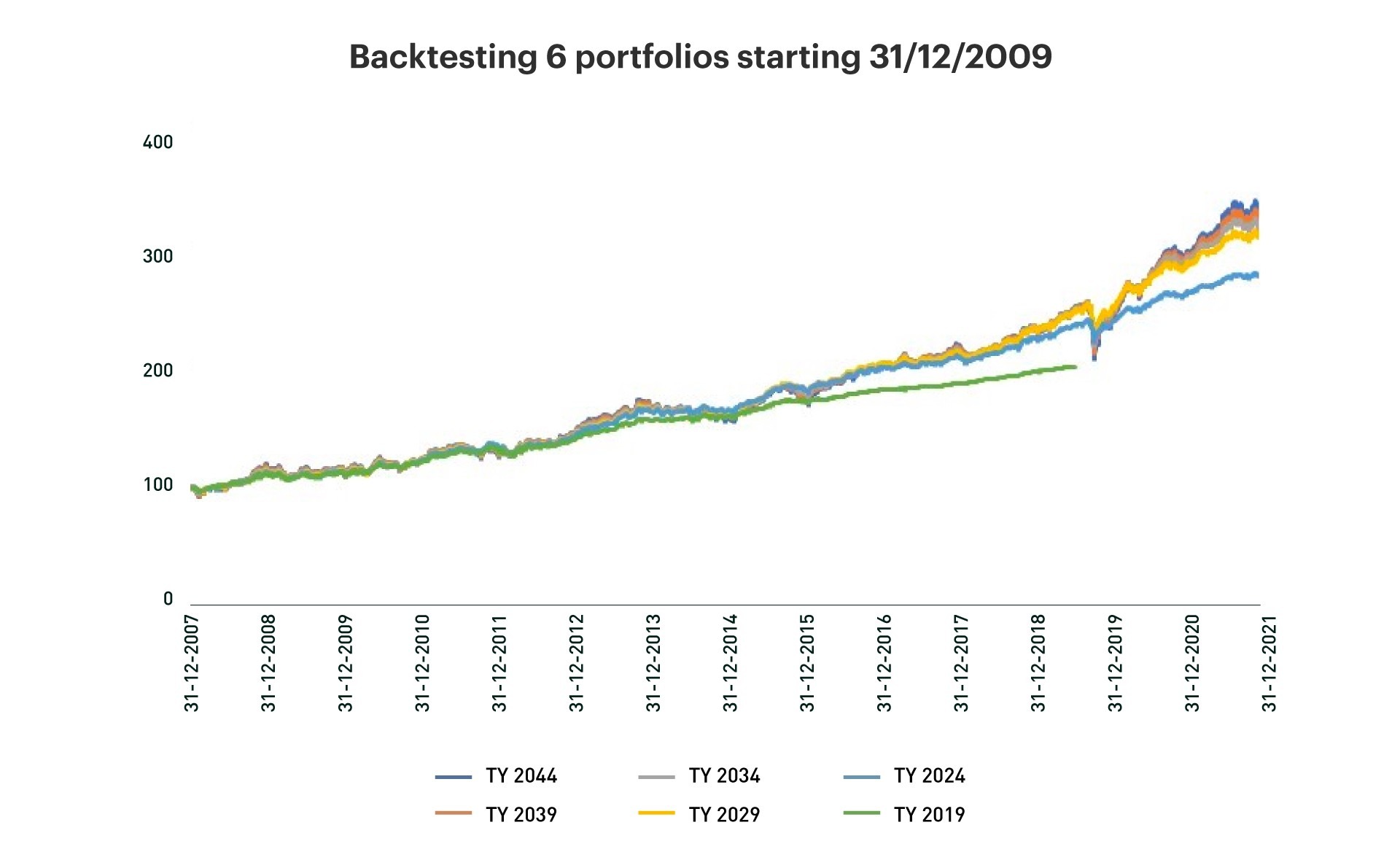
Volatility, returns, and CAGR of backtested smallcases
We backtested 6 horizons — 10, 15, 20, 25, 30, and 35-year smallcases over 6 different base years. After generating the data, we built out 3 tables — one outlining the annualized returns (CAGR) of an absolute investment, the next outlining the XIRR of the monthly SIP, and the last showcasing each smallcase’s volatility.
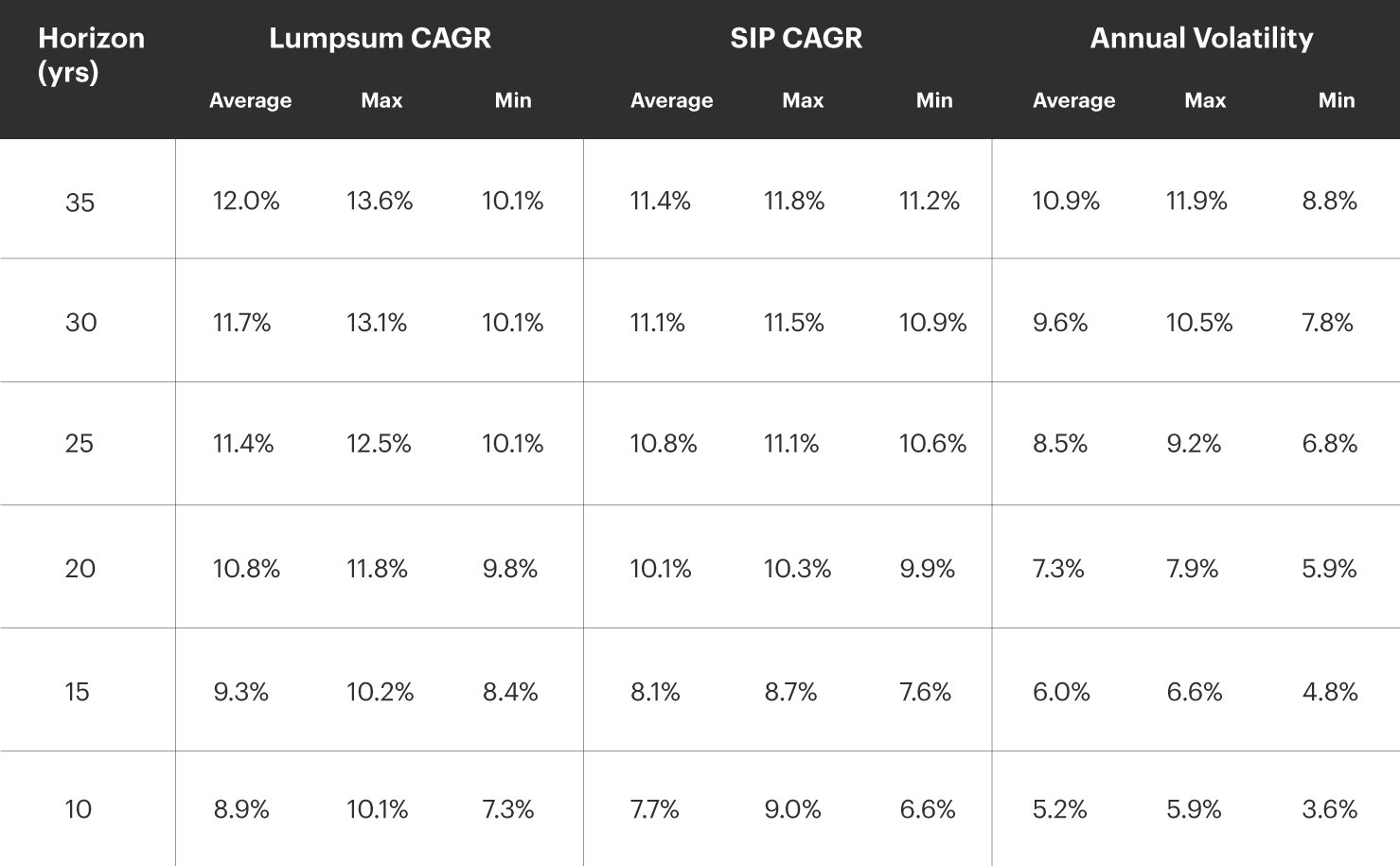
- CAGR: As you can see from the first table, we have outlined the average, minimum, and maximum returns of each target year smallcase. The average return of the 10-year smallcases would be lesser than the ones with a further target date because the closer the target year, the more is invested in conservative asset classes like fixed income, and less is invested in aggressive asset classes like equity.
- XIRR: The second table illustrates the average, minimum, and maximum XIRR an investor would have achieved had he invested in the respective Horizon. One clear takeaway is that the variation in maximum & minimum annualized returns in the SIP method has been reduced and is much closer to the overall average, further signifying the power of SIP vs lumpsum investing.
- Volatility: The volatility (3rd table) of smallcases with a closer target date is lesser, again, because aggressive investments like equity are more volatile but their presence in these smallcases is less than smallcases with target dates that are much later (20, 25, 30-year smallcases, for example).
Live Performance (Closed Beta)
We were very happy with the backtested performance of the target date smallcases. Thus, we decided to create 6 horizon smallcases at the beginning of 2021. These smallcases are Horizon — 2030, 2035, 2040, 2045, 2050, and 2055 and have the horizon period of 10, 15, 20, 25, 30 & 35 years respectively. The chart below shows the live performance of these smallcases over the last year.
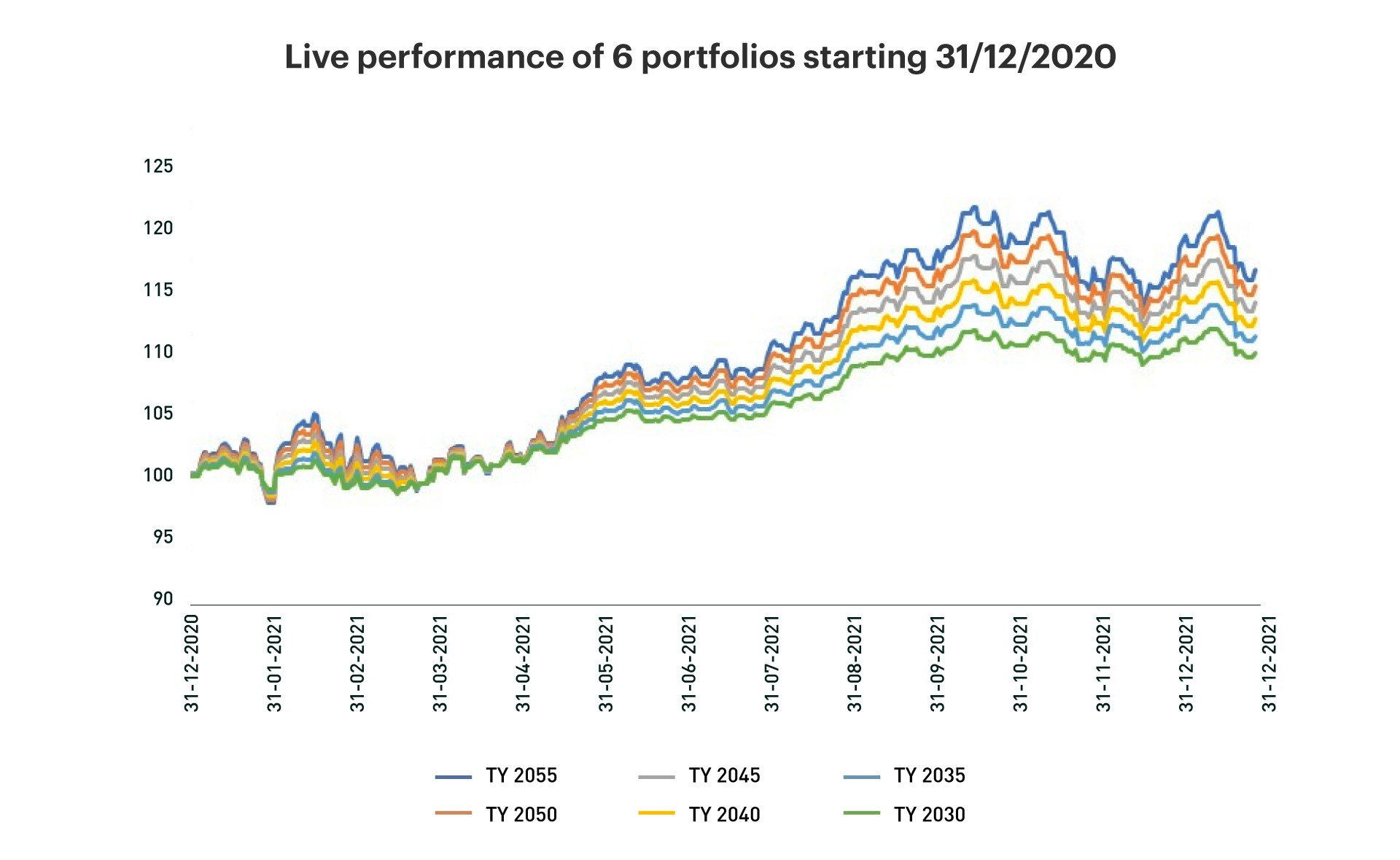
Follow us on Twitter @windmillcapHQ for updates on our latest and existing offerings and interesting market insights. Also, feel free to let us know what else you’d like to read!
Disclaimer: The content in these posts/articles is for informational and educational purposes only and should not be construed as professional financial advice and nor to be construed as an offer to buy/sell or the solicitation of an offer to buy/sell any security or financial products. Users must make their own investment decisions based on their specific investment objective and financial position and use such independent advisors as they believe necessary. Refer to our disclosures page, here.




